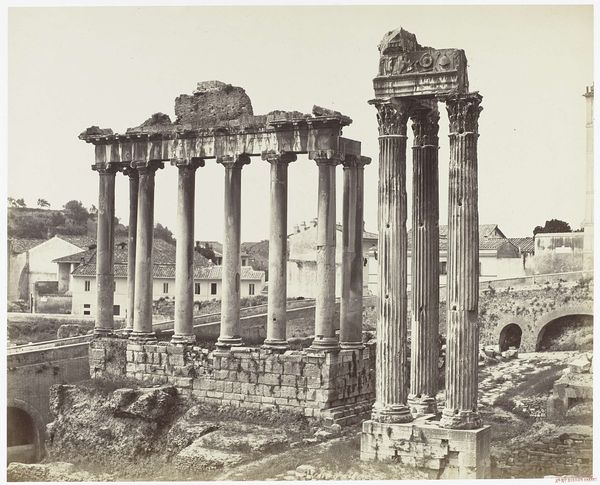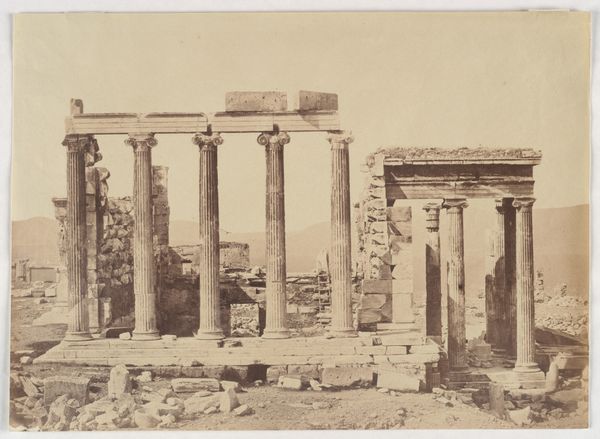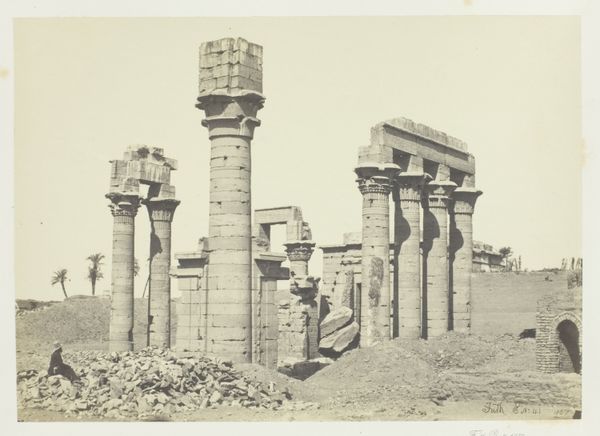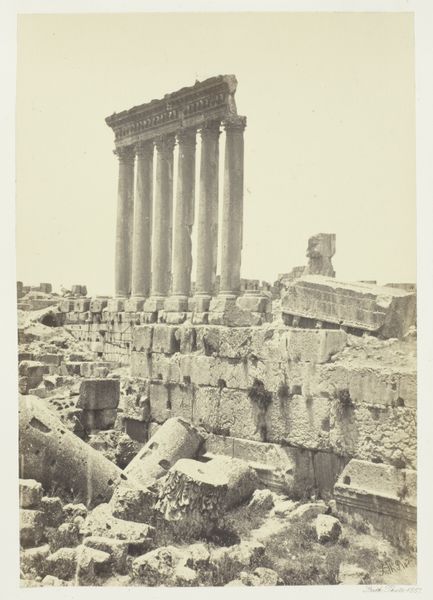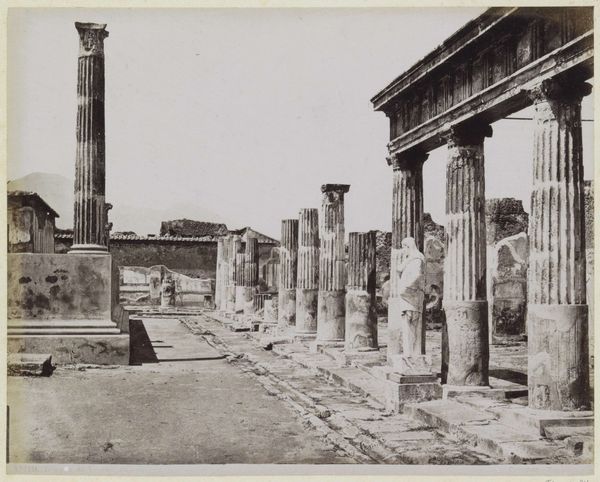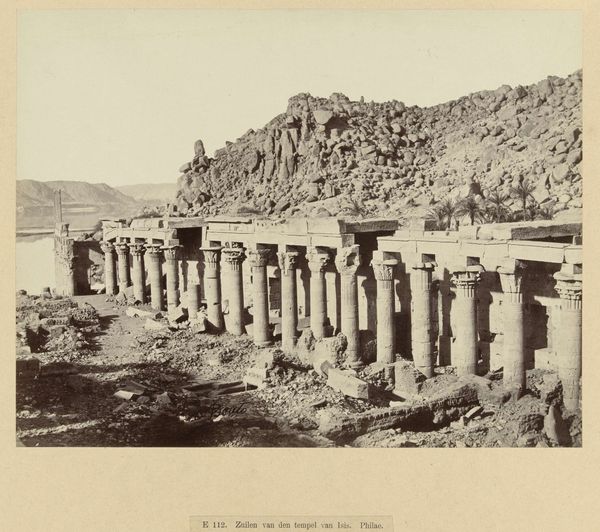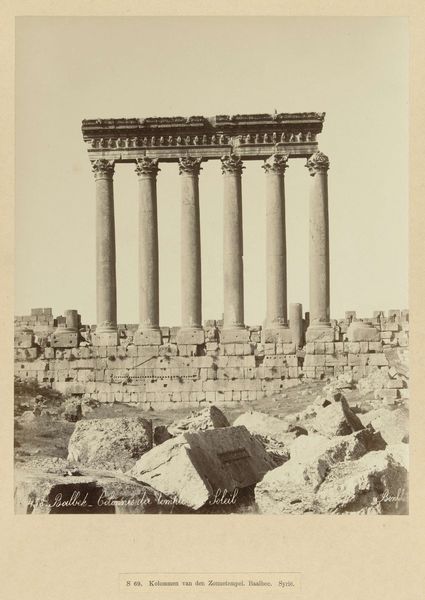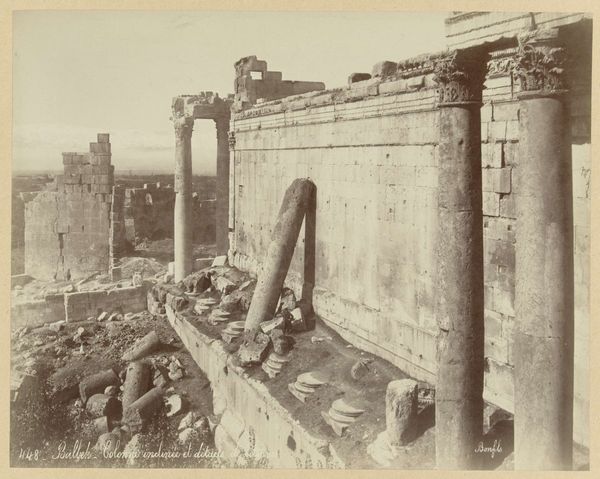
photography, gelatin-silver-print
#
landscape
#
photography
#
ancient-mediterranean
#
gelatin-silver-print
#
19th century
#
realism
Dimensions: height 218 mm, width 280 mm, height 468 mm, width 558 mm
Copyright: Rijks Museum: Open Domain
Curator: Here we have Féliz Bonfils' photograph, "Ruïne van de tempel van Bacchus, Baalbek," taken sometime between 1867 and 1877. It's a gelatin silver print, and quite a sight. Editor: It certainly is...a melancholic grandeur, almost sepia-toned into memory itself. All those fallen columns. You can practically hear the echoes. Curator: Bonfils was one of the first commercial photographers in the Middle East. Think of the physical effort! He lugged all that heavy equipment to Baalbek, now in Lebanon, just to capture this ruin. It’s all about materiality here—the silver in the print, the monumental stones. Editor: And the light! The sun's merciless glare, bleached into those ancient stones… I imagine Bonfils feeling that oppressive weight, the centuries pressing down as he adjusted his lens. It almost feels like *he's* unearthing the past along with his photograph. Curator: He was serving a growing market. People back in Europe had this fascination with the "Orient," fueled by archaeology and empire. He's not just recording history; he's packaging it, turning it into a commodity. Think of the laborers who quarried, carved, and raised these columns in the first place. And now this, a new layer of labor, the photographer making his own mark. Editor: So true...the romance of ruins concealing layers of very real work, creation, and then deconstruction…It all sort of returns back to earth in the photograph too—the dirt, the scattered stone. But something majestic survives the photographic processing, beyond simple reportage, the aura, the echo remains. Curator: It makes you wonder, doesn’t it? Who gets to tell the story of a ruin, and whose labor do we choose to see? The ancient builders? The photographer? The colonizers who consumed the images? Editor: Precisely. The photograph is a beautiful document of exploitation too— of both past architectural labour and the early photographic industry and economy. Curator: A photograph is never just a window; it's always a mirror reflecting our own time, even when it shows us the past. Editor: Indeed. A mirror clouded by time and context, challenging us to see more than just what's on the surface.
Comments
No comments
Be the first to comment and join the conversation on the ultimate creative platform.

